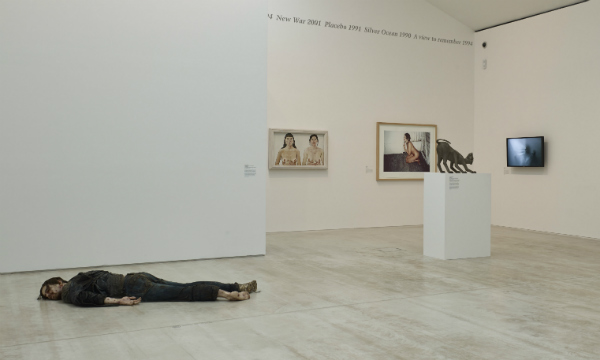
Photo: Stephen White
Self-portraiture was until rather recently a venerable artistic tradition, like the still life or the landscape painting. For centuries, self-representation has been employed by artists to explore biography, gender, and politics, among many other subjects.
Fast-forward a handful of years and the act of immortalizing oneself for posterity has been co-opted (and trivialized) by celebrities, museumgoers, and even monkeys. What happened? The selfie cometh, and conquered (see Beyoncé and Jay Z Elevate The Art Selfie Into a Movement, No, Monkey Selfies Cannot Be Copyrighted, Funny Ads Feature Van Gogh and Frida Kahlo Taking Selfies, and Douglas Coupland Predicts the 3D Selfie).
So, what type of impact has the arrival of the selfie had on art practices and their audiences? That is precisely the question to which “Self”— currently on view at Turner Contemporary in the British city of Margate—seeks to find answers.
Through a selection of over 100 self-portraits by a wide-range of artists, including Anthony van Dyck, Louise Bourgeois, John Constable, Tracey Emin, Lucian Freud, Antony Gormley, Damien Hirst, David Hockney, Sarah Lucas, JMW Turner, and Andy Warhol, “Self” attempts to re-evaluate self-portraiture in the 21st century from the angles of history, celebrity, collecting, gender, and mortality.
Self-Portrait as a Drowned Man
And, while on the subject of mortality, there’s one work in the exhibition that has particularly captivated (or terrified, depending on how you look at it) both audiences and media: Jeremy Millar’s Self-Portrait as a Drowned Man (The Willows) (2011). The work is a lifelike cast of the artist’s mangled body, covered in holes and lying prone on the gallery floor. It amalgamates two references, the horror story The Willows by Algernon Blackwood, and the 1840 photograph by Hippolyte Bayard, entitled Self Portrait as a Drowned Man, in which he faked his suicide for the camera.
“I didn’t quite realize the implications of depicting myself in such a way, and the horror of seeing oneself as if dead— that which one will never see,” Millar told artnet News. “I have got more used to it now, but the first time was extremely upsetting: I really thought that I must be dead, as there was my corpse, which meant that I wasn’t sure who was the ‘me’ who was looking at it. It was terrifying.”
Whether dead or alive, the question remains: what’s the appeal of the self-portrait for artists today, in a period when even Kim Kardashian is having a, seemingly successful, go at it? (see Kim Kardashian’s Selfies Oddly Legitimized by Art Publisher).
“The self-portrait can be made for many reasons. I suspect one reason is convenience—the artist is there, anyway, so may as well paint or photograph him or herself,” says Millar. Crucially, he doesn’t think that self-representation has to be tied to the idea of biography; on the contrary, it can be enticing because it creates a space for performing. Perhaps that might be precisely what we love about the selfie: how it enables us to become exactly what we are not.